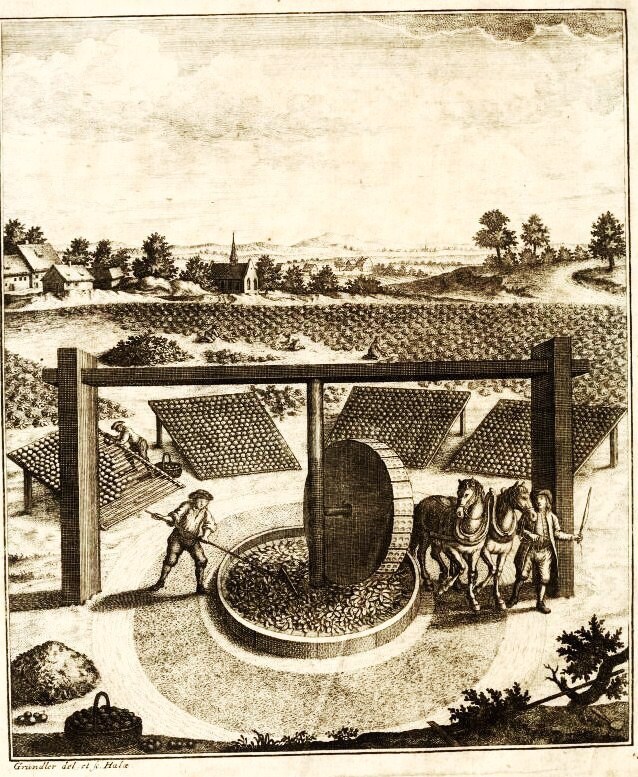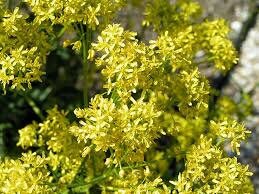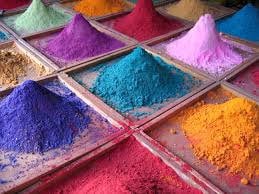To Pee, or not to pee: that is the question
Dyeing with Woad
I know, it’s a dilemma...because I really want you to know the best and the most natural way to dye your fibres, but using urine as a mordant (to keep the colour fast) is maybe a step too far if this is your first attempt at dyeing. So we’ll get onto the alternatives a little later. First let me introduce you to dyeing with woad.

The Step by Step Woad Project
Woad common name: Dyer’s woad, scientific name: Isatis tinctoria
As you already know, I’ve really wanted to come up with a project which spanned over a few months, so that you could follow the whole process, and growing and dyeing with woad fits the bill perfectly. If you want to take part, you will have to buy the seeds and plant them in your own garden, cultivate the plant and...dye.
This clever plant is very important for the dyer’s garden, yet this is actually my first time growing it, so we will be on this journey together every step of the way.
A little info:
Woad is actually part of the brassicaceae family (or the Mustard family; better known for broccoli, cauliflower, cabbage) and is a biennial.The small, 4-petaled, bright yellow flowers bloom in mid to late spring, which then change into small lime green pods that turn into a very dark (almost black) purple colour as they mature.
The flowers really only appear the second year. For the first year it is all about the leaves - which is just what we need for its incredible blue dye.

Getting Started Ahead of Time
- This plant needs quite a bit of space, Allow at least 12 - 18 inches when planting. When well-fed, the first-year rosette of leaves will grow to more than a foot wide. Woad will tolerate a certain degree of crowding, but the leaves will be smaller on a plant with less space to grow.

Now is the perfect time to buy your seeds, and my recommendation is to source them organically if you can. I source mine only a few miles away from me, from a wonderful charity, Irish Seed Savers Association who I totally recommend for all your plant food and flower needs.
They have a great ethos and help to preserve traditional varieties that would otherwise become extinct.
(you can find similar organisations/ seed savers/ seed banks in most countries).
I have been reading about its invasiveness in the US and unfortunately woad is classified as a noxious weed in many western states, so if you live in one of these states please find out what the restrictions are before you even consider growing it.
I am including a few links you may need below:

For Growing:
Woad Seeds Irish Seed Savers Association
1 litre pots for seedlings
Garden space (this plant grows over 3ft tall and up to a 1ft wide)
Potting soil (look for organic soil for sowing seeds)
Organic chicken pellets ( bone meal or similar will do)
For Dyeing:
Woad leaves
Fabric or fibre to dye
2 x 10 litre plastic buckets
A sturdy, heat-resistant bucket with a tight fitting lid
Hand blender
Thermometer
25g soda ash & 25g thiourea dioxide (available here from my shop)....or 10L urine
Kitchen scales
Just Do It
There’s no time like the present, so they say. So in order to keep up with The Woad Project, order your seeds now. Seeds aren’t difficult to grow, and I’ll go into more detail later.
I’m really interested to see how everybody gets on and I think it would be fantastic if you could join our facebook group to share your experience so we can all learn from each other’s woad journey click here to join.

Is It Safe?
I often hear people talking about natural dyes being unsafe which worries me, because it implies that the chemical dyes are safe... anyway I came across this great article by Chris Dalziel. Are natural dyes safe? So if you have any concerns, this should clear things up.
What's coming up next:
Next time I contact you, I’ll be giving you more information, including:
- new spring yarns
- my next dye recipe
- ‘table’ dolls
- more on hand dyed Flax and Hemp fibres
- tutorial on how to sow the seeds and other preparations

Comments
Post a Comment